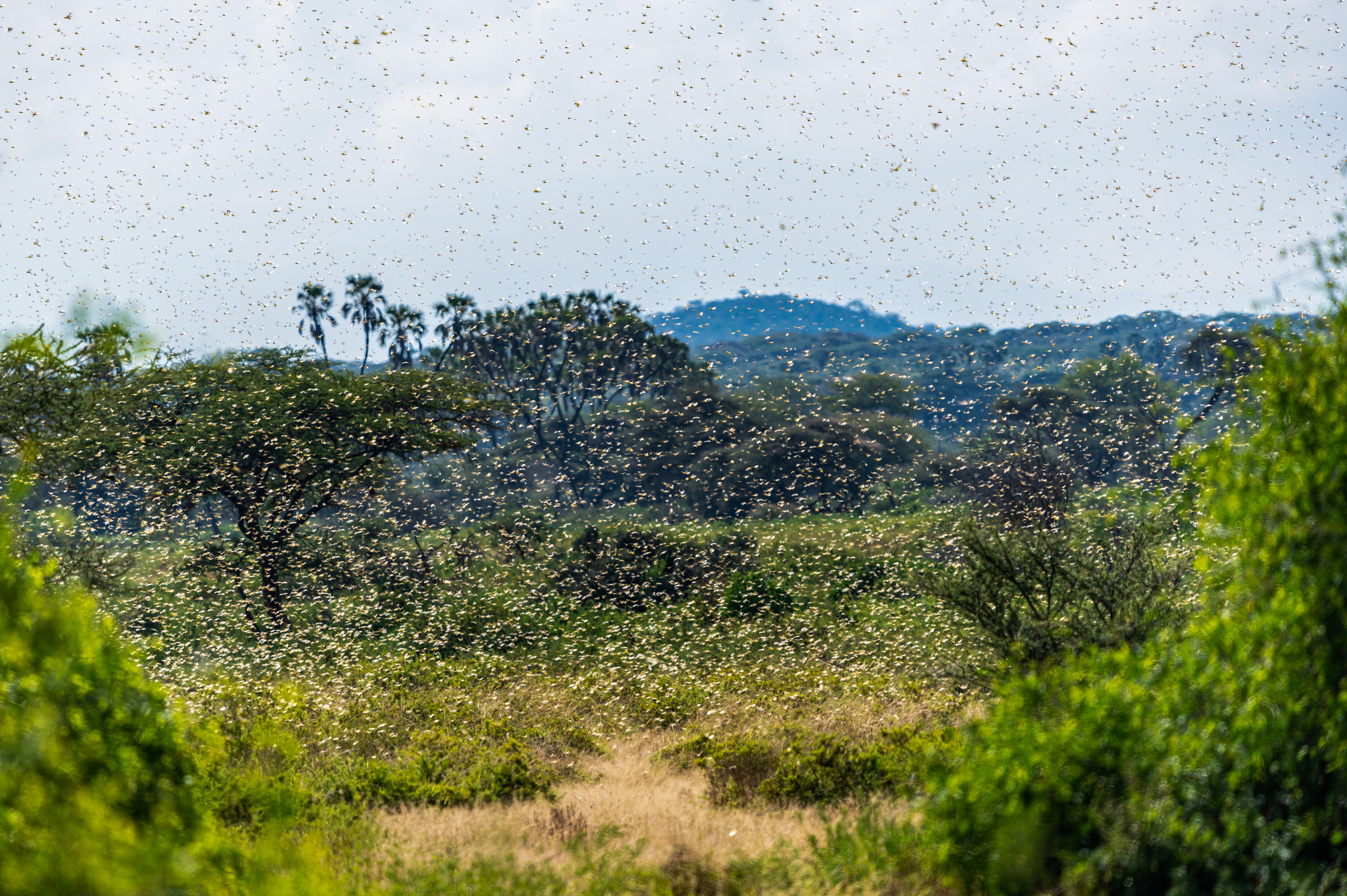\A plague of locusts has hit Africa. Massive swarms are devouring crops and other vegetation in their path, imperiling millions and setting the stage for a humanitarian disaster. On his recent visit to three African countries, Secretary of State Mike Pompeo committed a welcome $8 million to aid in locust control. If the U.S. really wants to help, it would stand firm against the radical anti-insecticide agenda.
The desert locust, which the United Nations Food and Agriculture Organization describes as “the most destructive migratory pest in the world,” can fly as far as 120 miles a day. Tens of billions of locusts can travel in the same swarm. The FAO says that locust swarms now threaten food security and livelihoods in Ethiopia, Kenya, Somalia, South Sudan, and Uganda as well as the Arabian Peninsula. Kenya has been hit especially hard. One swarm there measures 37 by 25 miles, and agricultural officials there estimate that 1.2 million acres of pasture and cropland have already been destroyed. The U.N. says that more than 20 million people in East Africa are facing food shortages.
The best way to stop the locusts is to spray insecticide from the air. Unfortunately, Kenya lacks adequate supplies of the best and most effective insecticide, fenitrothion, and is scrambling to get additional stocks. The radical environmental movement, which seeks to ban fenitrothion and other safe and effective chemicals, has made Kenyan authorities’ work more difficult.
Since last September, European Union-funded nongovernmental organizations in Kenya have been petitioning the Kenyan Parliament to ban more than 250 registered agricultural insecticides. Foremost among these groups is the Route to Food Initiative, funded by the Heinrich Böll Foundation, which in turn is affiliated with the German Green Party. The chemicals the Greens seek to ban are essential for controlling not only locusts but also common agricultural pests, weeds and fungi. Even as locusts devastate Kenyan crops, NGO lobbyists continue their anti-insecticide crusade.
While the swarms of desert locust present an urgent threat, Africa’s farmers face countless other pests that reduce crop yields. The fall armyworm, a caterpillar native to the Americas, arrived in Africa in 2016 and now affects most of the continent. The pest feeds on many crops but prefers corn, a staple in many African countries, and already it has reduced yields by as much as 50% in some countries.
In the Americas, farmers manage the fall armyworm using a combination of genetically modified crops and insecticides. In Africa, where governments ban most GM crops and lack insecticide, farmers are al

